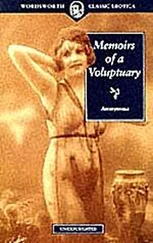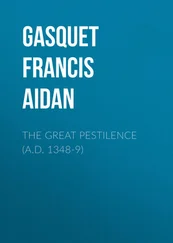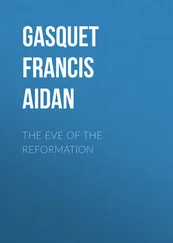Francis Gasquet - English Monastic Life
Здесь есть возможность читать онлайн «Francis Gasquet - English Monastic Life» — ознакомительный отрывок электронной книги совершенно бесплатно, а после прочтения отрывка купить полную версию. В некоторых случаях можно слушать аудио, скачать через торрент в формате fb2 и присутствует краткое содержание. Жанр: foreign_religion, foreign_antique, foreign_prose, на английском языке. Описание произведения, (предисловие) а так же отзывы посетителей доступны на портале библиотеки ЛибКат.
- Название:English Monastic Life
- Автор:
- Жанр:
- Год:неизвестен
- ISBN:нет данных
- Рейтинг книги:5 / 5. Голосов: 1
-
Избранное:Добавить в избранное
- Отзывы:
-
Ваша оценка:
- 100
- 1
- 2
- 3
- 4
- 5
English Monastic Life: краткое содержание, описание и аннотация
Предлагаем к чтению аннотацию, описание, краткое содержание или предисловие (зависит от того, что написал сам автор книги «English Monastic Life»). Если вы не нашли необходимую информацию о книге — напишите в комментариях, мы постараемся отыскать её.
English Monastic Life — читать онлайн ознакомительный отрывок
Ниже представлен текст книги, разбитый по страницам. Система сохранения места последней прочитанной страницы, позволяет с удобством читать онлайн бесплатно книгу «English Monastic Life», без необходимости каждый раз заново искать на чём Вы остановились. Поставьте закладку, и сможете в любой момент перейти на страницу, на которой закончили чтение.
Интервал:
Закладка:
The work of the weekly cooks is also carefully set out in these constitutions. These officials were four in number, and, upon the sign for vespers, after making their prayer, they were to proceed to the kitchen and obtain the necessary measure of beans for the following day. They then said their vespers together, and proceeded to wash the beans in three waters, putting them afterwards into the great boiling-pot with water ready for the next day. After Lauds on the following day, when they had received the usual blessing for the servers, after washing themselves they proceeded to the kitchen and set the cauldron of beans on the fire. The pot was to be watched most carefully lest the contents should be burnt. The skins were to be taken off as they became loosened, and the beans were to be removed as they were cooked. When all had been finished, the great cauldron was to be scoured and cleaned “ usque ad nitidum .” Directly the beans had been removed from the fire, another pot was to be put in its place, so that there might always be a good supply of water for washing plates and dishes. These, when cleaned, were to be put into a rack to dry; this rack was to be constantly and thoroughly scoured and kept clean and sweet.
When the cooking of this bean soup had progressed so far, the four cooks were to sit down and say their Divine Office together whilst the hot water was being boiled. A third pot, with vegetables in cold water, was to be then made ready to take its place on the fire, after the Gospel of the morning Mass. When the daily Chapter, at which all had to be present, was finished, the beans were again to be put on the fire and boiled with more water, whilst the vegetables also were set to cook; and when these were done the cooks got the lard and seasoning, and, having melted it, poured it over them. Two of the four weekly cooks now went to the High Mass, the other two remaining behind to watch the dinner and to put more water into the cooking-pots when needed. When the community were ready for their meal, the first cook ladled out the soup into dishes, and the other three carried them to the refectory. In the same way the vegetables were to be served to the community, and when this had been done the four weekly cooks proceeded at once to wash with hot water the dishes and plates which had been used for beans and vegetables, lest by delay any remains should stick to the substance of the plate and be afterwards difficult to remove.
5. THE CHAPTER-HOUSE
The chapter-hall, or house, was situated on the eastern side of the cloister, as near to the church as possible. Its shape, usually rectangular, sometimes varied according to circumstances and places. At Worcester and Westminster, for example, it was octagonal; at Canterbury and Chester rectangular; at Durham and Norwich rectangular with an apsidal termination. Seats were arranged along the walls for the monks, sometimes in two rows, one raised above the other, and at the easternmost part of the hall was the chair of the superior, with the crucifix or Majestas over it. In the centre a raised desk or pulpit was arranged for the reader of the Martyrology, etc., at that part of Prime which preceded the daily Chapter, and at the evening Collation before Compline.
6. THE DORMITORY
The position of the dormitory among the claustral buildings was apparently not so determined either by rule or custom, as some of the other parts of the religious house. Normally, it may be taken to have communicated with the southern transept, for the purpose of giving easy access to the choir for the night offices. In two cases it stood at right angles to the cloister – at Worcester on the western side, and at Winchester on the east. The Rites of Durham says that “on the west side of the cloister was a large house called the Dortor, where the monks and novices lay. Every monk had a little chamber to himself. Each chamber had a window towards the Chapter, and the partition betwixt every chamber was close wainscotted, and in each window was a desk to support their books.”
The place itself at Durham, and, indeed, no doubt, usually, was raised upon an undercroft and divided into various chambers and rooms. Amongst these were the treasury at Durham and Westminster, and the passage to the chapter-hall in the latter. The dormitory-hall was originally one open apartment, in which the beds of the monks were placed without screens or dividing hangings. In process of time, however, divisions became introduced such as are described by the author of the Rites of Durham , and such as we know existed elsewhere. The cubicles or cells thus formed came to be used for the purpose of study as well as for sleeping, which accounts for the presence of the “desk to support their books” spoken of above. The dormitory also communicated with the latrine or rere-dortor , which was lighted, partitioned, and provided with clean hay.
For the purpose of easy access, as for instance at Worcester, the dormitory frequently communicated directly with the church through the south-western turret; at Canterbury a gallery was formed in the west gable-wall of the chapter-house, over the doorway, and continuing over the cloister roof, came out into an upper chapel in the northern part of the transept; at Westminster a bridge crossed the west end of the sacristy, and at St. Alban’s and Winchester passages in the wall of the transept gave communication by stairs into the church.
7. THE INFIRMARY
In the disposition of the parts of the religious house no fixed locality was apparently assigned by rule or custom to the infirmary, or house for the sick and aged. Usually it appears to have been to the east of the dormitory; but there were undoubtedly numerous exceptions. At Worcester it faced the west front of the church, and at Durham and Rochester apparently it joined it; whilst at Norwich and Gloucester it was in a position parallel to the refectory. Adjoining the infirmary was sometimes the herbarium , or garden for herbs; and occasionally, as at Westminster, Gloucester, and Canterbury, this was surrounded by little cloisters. The main hall, or large room, of the infirmary often included a chapel at the easternmost point, where the sick could say their Hours and other Offices when able to do so, and where the infirmarian could say Mass for those under his charge. According to the constitutions of all religious bodies the care of the sick was enjoined upon the superior of every religious house as one of his most important duties.
“Before all things, and above all things,” says St. Benedict in his Rule, “special care must be taken of the sick, so that they be served in very deed, as Christ Himself, for He saith: ‘I was sick, and ye visited me’; and, ‘What ye did to one of these My least Brethren, ye did to Me.’”
On this principle not only was a special official appointed in every monastery, whose first duty it was to look to the care and comfort of those who were infirm and sick, but the officials of the house generally were charged with seeing that they were supplied with what was needed for their comfort and cure. Above all, says the great legislator, “let the abbot take special care they be not neglected,” that they have what they require at the hands of the cellarer, and that the attendants do not neglect them, “because,” he adds, “whatever is done amiss by his disciples is imputed to him.” For this reason, at stated times, as for instance immediately after the midday meal, the superior, who had presided in the common refectory, was charged to visit the sick brethren in the infirmary, in order to be sure that they had been served properly and in no ways neglected.
8. THE GUEST-HOUSE
The guest-house ( hostellary , hostry , etc.) was a necessary part of every great religious house. It was presided over by a senior monk, whose duty it was to keep the hall and chambers ready for the reception of guests, and to be ever prepared to receive those who came to ask for hospitality. Naturally the guest-house was situated where it would be least likely to interfere with the privacy of the monastery. The guest-place at Canterbury was of great size, measuring forty feet broad by a hundred and fifty feet long. The main building was a big hall, resembling a church with columns, having on each side bedrooms or cubicles leading out of it. In the thirteenth century John de Hertford, abbot of St. Alban’s, built a noble hall for the use of guests frequenting his abbey, with an inner parlour having a fireplace in it, and many chambers arranged for the use of various kinds of guests. It had also a pro-aula , or reception-room, in which the guest-master first received the pilgrim or traveller, before conducting him to the church, or arranging for a reception corresponding to his rank and position.
Читать дальшеИнтервал:
Закладка:
Похожие книги на «English Monastic Life»
Представляем Вашему вниманию похожие книги на «English Monastic Life» списком для выбора. Мы отобрали схожую по названию и смыслу литературу в надежде предоставить читателям больше вариантов отыскать новые, интересные, ещё непрочитанные произведения.
Обсуждение, отзывы о книге «English Monastic Life» и просто собственные мнения читателей. Оставьте ваши комментарии, напишите, что Вы думаете о произведении, его смысле или главных героях. Укажите что конкретно понравилось, а что нет, и почему Вы так считаете.












